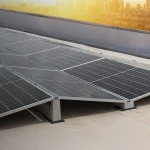
You love your vintage home—the crown molding, the hardwood floors, the history in every creaky floorboard. But let’s be honest: those charming quirks can make smart home integration feel like fitting a square peg into a round hole. Here’s the deal—it doesn’t have to. With the right approach, you can enjoy Alexa-controlled lighting without sacrificing your home’s character.
Why Vintage Homes Need a Different Approach
Older houses weren’t built with Wi-Fi signals or wireless hubs in mind. Thick plaster walls, quirky wiring, and architectural details can interfere with modern tech. But that doesn’t mean you’re stuck in the past. It just means you’ll need to get… creative.
Common Challenges (and Solutions)
1. Thick Walls & Signal Issues: Plaster and lathe walls are basically kryptonite for Wi-Fi. Mesh networks or powerline adapters can help—think of them as tech translators for your home’s stubborn structure.
2. Outdated Wiring: Knob-and-tube wiring? No neutral wire? Smart switches like Lutron Caseta (which doesn’t require a neutral) can be a lifesaver. Or, go wireless with battery-powered options.
3. No Built-In Smart Hubs: Vintage homes lack the nooks for sleek control panels. Hide hubs in closets or use voice assistants to keep things invisible.
Smart Upgrades That Respect Your Home’s History
Here’s where it gets fun. You don’t have to choose between a 1920s bungalow and a 21st-century smart home. These upgrades blend in—or even enhance—your home’s vintage vibe.
1. Retro-Style Smart Bulbs
Edison-style smart bulbs (like Philips Hue’s filament series) give you warm, dimmable light that looks straight out of the gaslight era—but controlled by your phone. Pair them with antique fixtures for a seamless look.
2. Hidden Smart Thermostats
Nest or Ecobee thermostats can be tucked into less visible spots. Or, if you’ve got a vintage radiator, smart radiator valves (like Tado) keep the charm while adding efficiency.
3. Discreet Smart Locks
August Smart Locks install inside your existing deadbolt, so from the street, no one knows your front door is tech-savvy. Perfect for preserving that original hardware.
Wiring Workarounds for the Pre-War Home
If your home’s wiring is older than your grandparents, you’ve got options. Here’s a quick comparison:
| Problem | Solution | Product Example |
| No neutral wire | Smart switches that don’t need one | Lutron Caseta |
| Knob-and-tube wiring | Battery-powered sensors | Aqara Motion Sensor |
| Limited outlets | Smart plugs with extenders | TP-Link Kasa |
Voice Control: The Invisible Assistant
Voice assistants like Alexa or Google Home are a vintage home’s best friend. No ugly panels, no rewiring—just ask for the lights to dim while you admire your stained-glass windows. Pro tip: name your devices after the room’s history (“Alexa, turn on the Parlor”). Feels fancier, doesn’t it?
When to Call a Pro (and When to DIY)
Some projects are DIY-friendly; others? Not so much. Here’s a quick guide:
- DIY: Smart bulbs, plugs, battery-powered sensors.
- Pro Needed: Hardwired switches, thermostat installs (if your HVAC is ancient), or anything involving sketchy wiring.
Honestly, if your fuse box looks like it belongs in a museum, spend the money on an electrician. Safety first.
The Bottom Line
Smart home tech isn’t just for glass-walled modern lofts. With a little patience—and maybe a few creative workarounds—your vintage home can be as connected as you are. After all, the best kind of history is the kind that still works with your iPhone.














